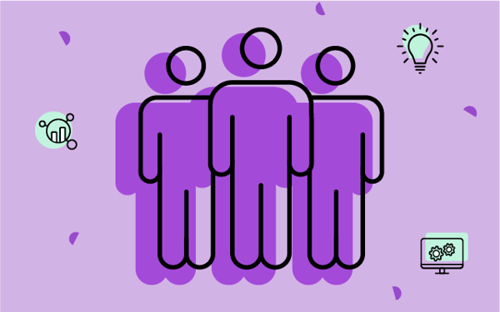This is a Crayon guest post from one of our partners, Atlantic Intelligence. Visit the Crayon Partner Directory to learn more!
What separates competitive from competitor intelligence? Simply put, it’s oneself and one’s company. It’s about how individuals and the collective company become more competitive. The great Pat Summitt used to tell her team, “It’s not a mystery how we will beat them. I will tell you straight up. We are going to outwork them.”
That’s all strategic competitive intelligence is. It is taking a set of facts and competitor intelligence and building up strategies across the company. What do the customers think (Voice of the Customer)? What do the buyers think (Voice of the Buyer)? What do the employees think (Employee Experience)? What are the market signs? Where’s the opportunity?
It’s a big world out there, where does a company invest? Where do they acquire, where do they divest, where do they acquire divestitures? Being able to answer, “What do you think?” is strategic competitive intelligence. It’s being able to compete from the boardroom and down through the organization.
Today, when it comes to competitor intelligence, there is zero tolerance for errors. If I tell a client a switch has 16 ports and it’s been upgraded to 24 ports, that’s unacceptable because it dramatically changes the competitive design and perhaps the price to win for the company.
Strategic Competitive Intelligence also plays out on the big stage. Think CTO and CHRO type decisions. Think CFO and investor relations support during challenging economic times. Think of financing pitches. At its core, competitive intelligence is a well-informed decision-making process. It’s up to us to suggest the well-informed but wild ideas, even though we may hear, “You’re nuts, but I appreciate you suggesting it.”
How to move from competitor to competitive intelligence?
The answer is one that takes a lot of consistent reminding. The first step in this process is understanding the persona that your content is supporting. Are you supporting newly hired BDRs? Experienced BDRs? Account Executives? Solutions Engineers? What about the managers, directors, VPs, and c-suite of all these responsibilities? It’s a lot, but it’s crucial to recognize that the SVP of Sales will not have the same interest and need as a BDR out of new hire training.
Take small steps. Pick a persona to deliver data, content, and insights to and — most importantly — determine how that persona will use the information you give them.
Let’s take pricing for example. All pricing teams work at making their package unique, think new car add-on packages. If the CI professional looks at the competitor’s packaging they can determine a winning comparison with your own solution.
Let’s say you have analytics included in a pricing package but for a competitor it is an add-on which puts you at a price disadvantage if analytics are not required in the quotes. If I were in sales, I would want to know this competitive information at the start of the engagement.
Without this type of pricing competitive intelligence, many BDRs and AEs will sell on price. In our Guided Buyer program, over the past year, I have not had a single vendor not tell me they can lower the price if I make a faster decision. That is removing revenue and pure profit from that company.
Can you be competitive without a competitor?
I call this the “We don’t have any competitors” situation. That’s a post of its own for another time, but for here, let’s start with this as factual premise: Can a company become more competitive without known competitors? Yes!
Now, we all know — even in the newest category — there is competition. Status Quo. Fear of change. Competing dollars. These are all competition to your solution.
In today’s economy, net new investments are hard, and people are looking left, right, and center for solution consolidations. A competitive intelligence professional will work on these ‘competitors’ and the best way to do that is through a persona study. It’s more than a voice of the customer study. Instead, it’s critical to pick a couple of personas you need to win and focus on knowing their fears and motivations, with the latter needing to outweigh the former.
That is the competitive task, motivation over fear. Help your organization minimize fear and increase motivation. Be prescriptive as to how your solution is deployed either alongside or to replace another solution. Think through carefully the technical requirements. Think through adoption and utilization in the user set as change is not successful if not adopted and utilized.
And for motivation, think through how you can replace or reduce the dependence on other tools and to do that, you need to understand the ripple effects of those changes. Yes, it is a lot, but if your leadership is stating there are no competitors, then this is the task, competitive forces.
The K3 Theory
Over the course of 30 years in Strategic Competitive Intelligence, I have relied on what I call the K3 theory: Know what you know. Know what you don’t know. And Know what you want to know.
It has been my experience that whether your thoughts are heard, heeded, or acted on, if you are authentic about K3, then you earn yourself a seat at the tables you want to be at.
From my personal experiential learning, as hard as some of the lessons have been, I’ve learned that not everyone with a CI skillset wants the full skillset, and that is OK. We need data. We need curiosity, We need content. We need crazy thinking. We need communication. We need creativity. We need partners.
The beauty of this profession and something my Philosophy advisor told me in my junior year at the University of New Hampshire is “I am teaching you how to think, effectively, and you may use that one day.” Atlantic Intelligence is thinking every day. We’re thinking about how to win. How to get revenue. How to keep revenue. It’s a global competition. And we love to win! How can we help?

Related Blog Posts
Popular Posts
-
 How to Create a Competitive Matrix (Step-by-Step Guide With Examples + Free Templates)
How to Create a Competitive Matrix (Step-by-Step Guide With Examples + Free Templates)
-
 Sales Battlecards 101: How to Help Your Sellers Leave the Competition In the Dust
Sales Battlecards 101: How to Help Your Sellers Leave the Competition In the Dust
-
 The 8 Free Market Research Tools and Resources You Need to Know
The 8 Free Market Research Tools and Resources You Need to Know
-
 6 Competitive Advantage Examples From the Real World
6 Competitive Advantage Examples From the Real World
-
 How to Measure Product Launch Success: 12 KPIs You Should Be Tracking
How to Measure Product Launch Success: 12 KPIs You Should Be Tracking



